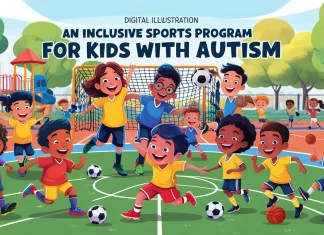Understanding the Intersection of Down Syndrome and Autism
Did you know that some individuals with Down Syndrome can also have Autism? It’s an area that’s not often discussed, but understanding the co-occurrence can be a game-changer for families, caregivers, and even professionals. Let’s dive into this intricate topic and explore its challenges, causes, and possible solutions.
What is Down Syndrome?
Down Syndrome is a genetic condition caused by the presence of an extra copy of chromosome 21. This condition affects cognitive development, physical growth, and facial features. Common traits include mild to moderate intellectual disabilities and specific physical characteristics, such as a flattened facial profile.
What is Autism?
Autism, or Autism Spectrum Disorder (ASD), is a neurodevelopmental condition that affects communication, behavior, and social interactions. Autism exists on a spectrum, meaning symptoms and severity vary widely among individuals.
Co-occurrence: How Common Is It?
It’s estimated that about 18% of individuals with Down Syndrome also have Autism. While these conditions may seem unrelated at first glance, their overlap presents unique challenges for diagnosis and care.
Unique Challenges of Co-occurrence
Behavioral Difficulties
When Down Syndrome and Autism occur together, behavioral issues can be more pronounced. For instance, self-stimulatory behaviors (stimming) common in Autism may intensify.
Communication Barriers
Communication difficulties, a hallmark of both conditions, can be even more severe. Non-verbal communication methods like gestures may be harder to grasp for individuals with this dual diagnosis.
Social Interaction Struggles
Forming relationships and understanding social norms can be more complex, making social integration a significant hurdle.
Identifying Co-occurrence Early
Diagnostic Overlaps
Symptoms like delayed speech or repetitive behaviors could point to either condition, making it tricky to identify co-occurrence without careful evaluation.
Tools and Techniques for Diagnosis
Pediatricians and developmental specialists often use tools like the Autism Diagnostic Observation Schedule (ADOS) alongside genetic testing to pinpoint the co-occurrence.
Why Do Down Syndrome and Autism Co-occur?
Genetic Links
Some researchers suggest that genetic mutations or anomalies may explain why these two conditions overlap. However, the exact genetic interplay remains a mystery.
Environmental Factors
While genetics play a major role, some theories point to prenatal and environmental factors, such as maternal health and exposure to certain toxins.
Effective Therapies for Co-occurrence
Speech and Language Therapy
Speech therapy can significantly help improve communication skills. Therapists often use visual aids and sign language to support non-verbal children.
Occupational Therapy
Occupational therapists focus on enhancing fine motor skills, sensory integration, and daily living tasks, offering a holistic approach to managing co-occurrence.
Behavioral Interventions
Applied Behavior Analysis (ABA) is one of the most effective methods to address behavioral challenges, helping individuals develop positive coping mechanisms.
How Families Can Cope and Thrive
Community Support Networks
Local and online support groups provide a platform for families to share experiences and gain advice. These networks can be a lifeline.
Financial Assistance and Resources
Caring for a child with co-occurring conditions can strain finances. Programs like Medicaid and non-profit grants can help alleviate some of the burden.
Bringing Awareness to Co-occurrence
Awareness is the first step toward meaningful change. By shedding light on the co-occurrence of Down Syndrome and Autism, we can inspire more inclusive policies, research, and support systems. It’s about creating a world where every individual, regardless of their challenges, has the opportunity to thrive.
FAQs on Down Syndrome and Autism Co-occurrence
1. Can Autism be diagnosed in someone with Down Syndrome?
Yes, though it requires specialized assessments due to overlapping symptoms.
2. Are there specific therapies for children with both conditions?
Yes, therapies like ABA, speech therapy, and occupational therapy are tailored to address both sets of challenges.
3. How early can co-occurrence be diagnosed?
Early diagnosis is possible, often around the age of 2-4, with comprehensive evaluations.
4. Are there genetic tests for co-occurrence?
Genetic tests can confirm Down Syndrome, but Autism diagnosis relies on behavioral assessments.
5. Where can families find support?
Families can access support through local advocacy groups, online forums, and government programs.



























